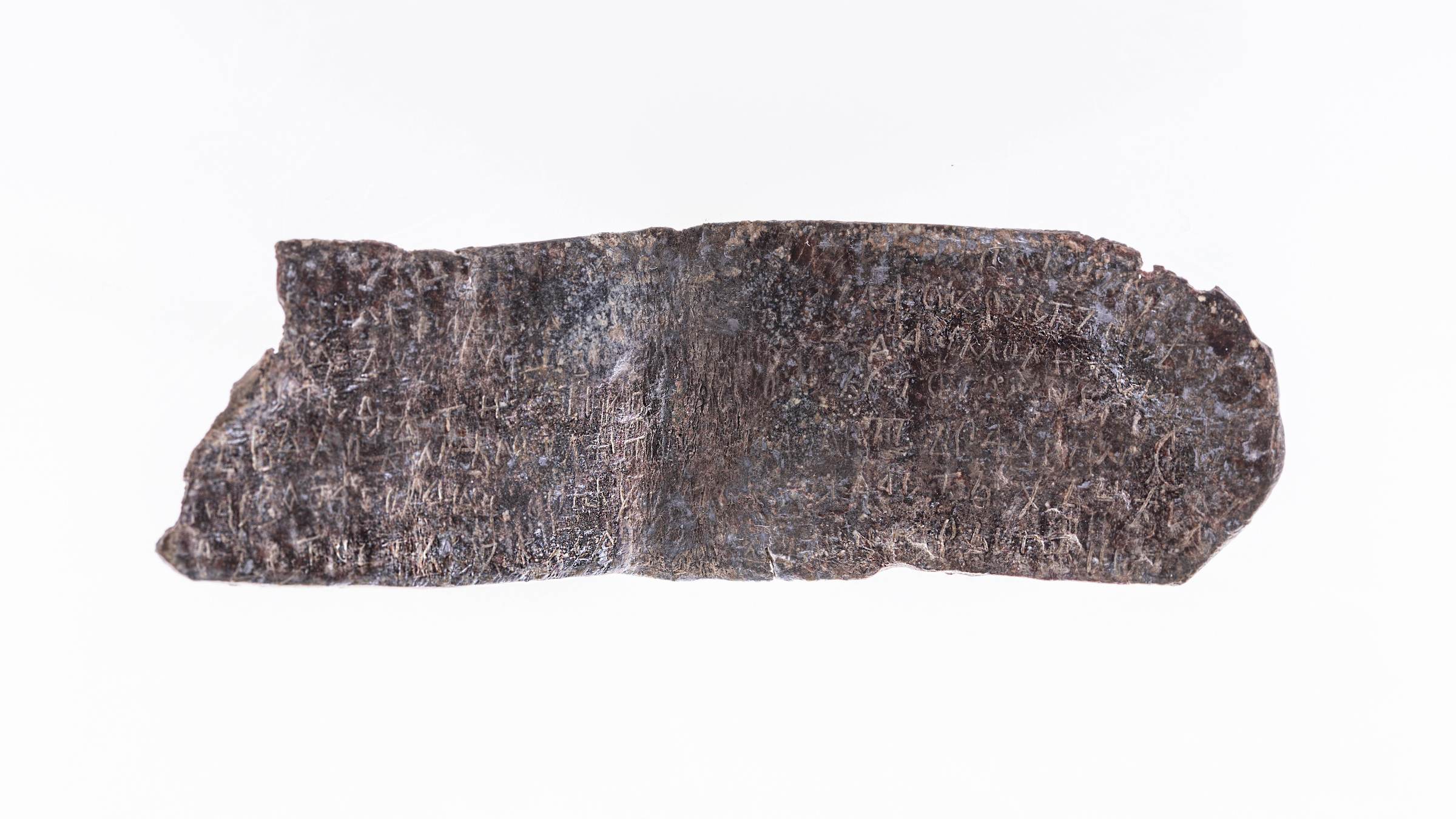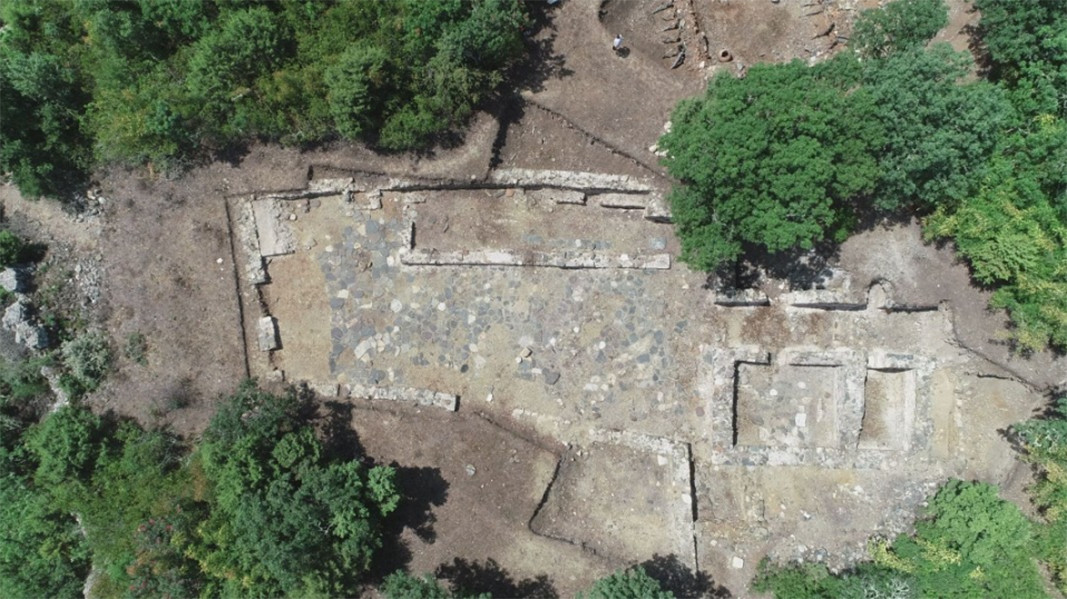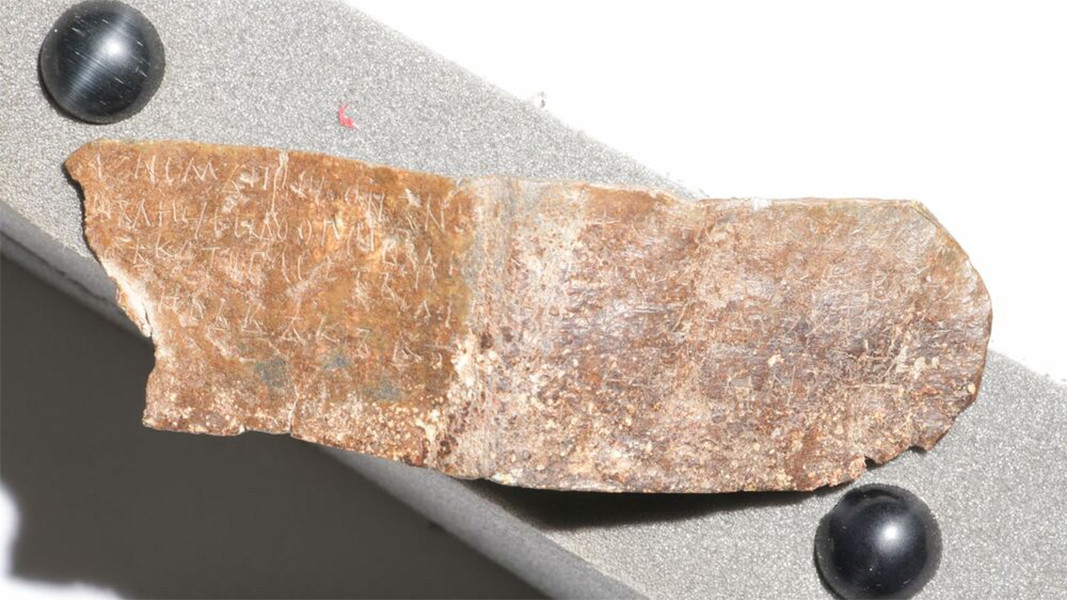The discovery of an ancient breastplate in the ruins of a Bulgarian fortress has caused a stir in the archaeological community. The 1,100-year-old inscription found on the breastplate may be the oldest Cyrillic text ever discovered.

The breastplate was discovered in a site that was once inhabited by the ancient Bulgars, a nomadic tribe that roamed the Eurasian steppes.
According to Ivailo Kanev, an archaeologist with Bulgaria’s National Museum who leads the team excavating the fortress, (which is on the border between Greece and Bulgaria) The text was written on a lead plate worn on the chest to protect the wearer from trouble and evil.
The inscription refers to two supplicants named Pavel and Dimitar, Kanev said. “It is not known who the supplicants Pavel and Dimitar were, but most likely Dimitar participated in the garrison, settled in the fortress, and was a relative of Pavel.”
According to Kanev, the inscription dates from the reign of Tsar Simeon I (also known as Simeon the Great), who governed the Bulgarian Empire from 893 and 927. The tsar expanded the empire during this period, undertaking military campaigns against the Byzantine Empire.

One of the oldest Cyrillic texts?
During the Middle Ages, the Cyrillic writing system, which is used in Russian and other languages throughout Eurasia, was developed.
Based on how the letters are written and the location of the inscription within the fortress, “this text probably got into the fortress in the period between 916 and 927 and was brought by a Bulgarian military garrison,” said Kanev.
Before this discovery, the earliest surviving Cyrillic texts dated from 921. The newly discovered inscription is therefore one of the oldest Cyrillic texts ever found. Kanev said he was planning to publish a detailed description of the inscription and the fortress in the future.
“This is a very interesting find and deservedly arouses interest,” Yavor Miltenov, a researcher with the Institute for the Bulgarian Language of the Bulgarian Academy of Sciences, “We will need to see the full publication of the inscription and the context in which it was found before we can be certain of its date.”

This is an intriguing discovery that provides a unique look into the past and helps in our understanding of the history of Cyrillic writing. We look forward to hearing more updates on this exciting discovery and what it could reveal about the history of Cyrillic writing.



